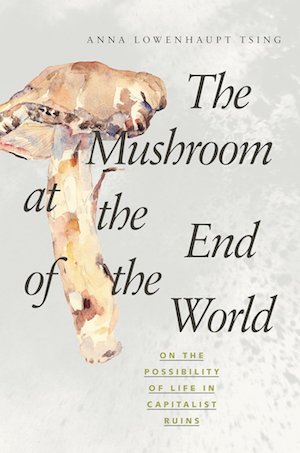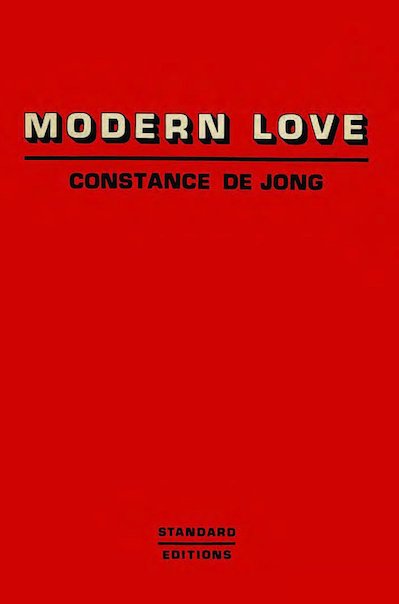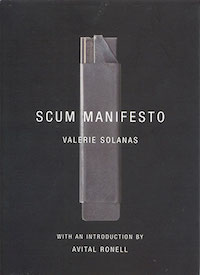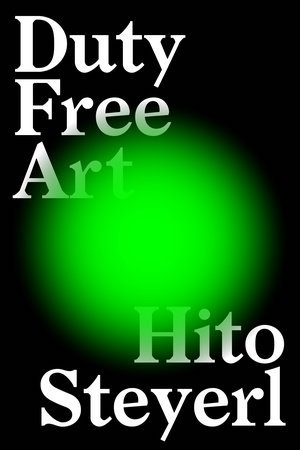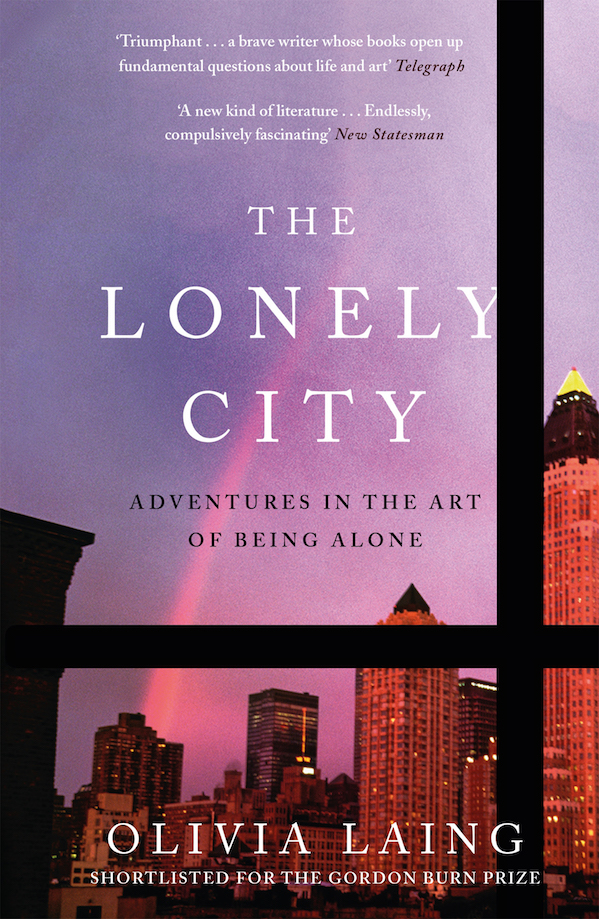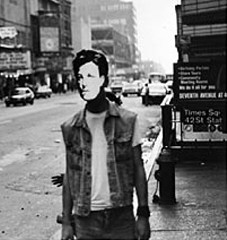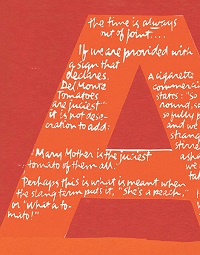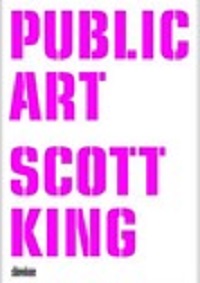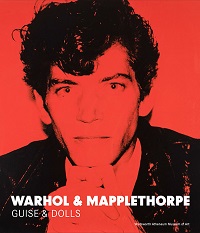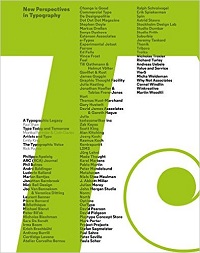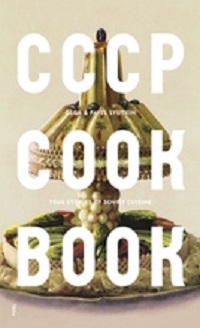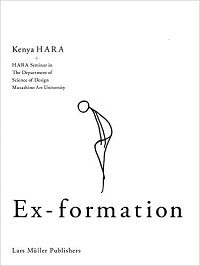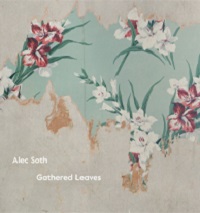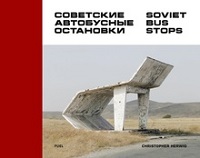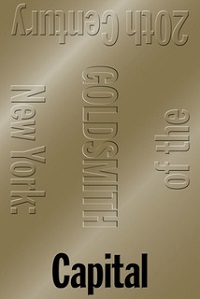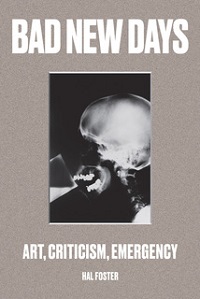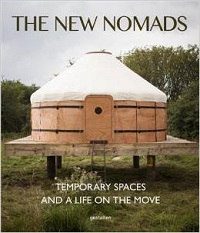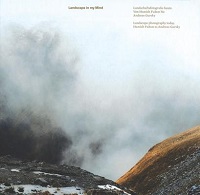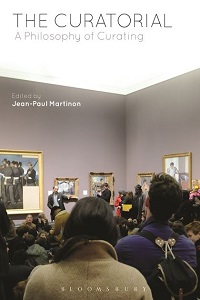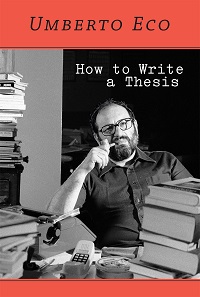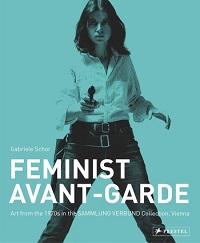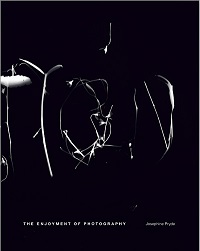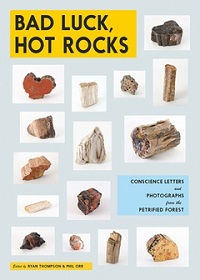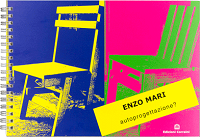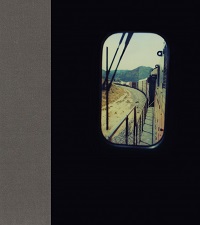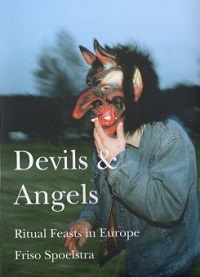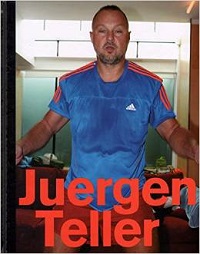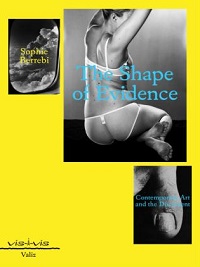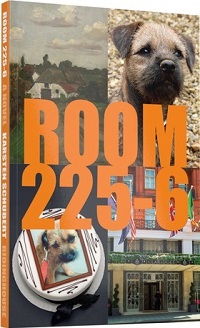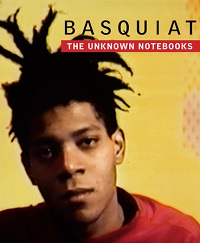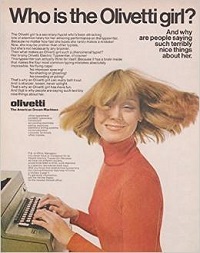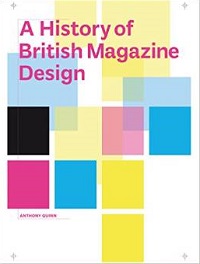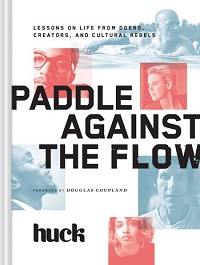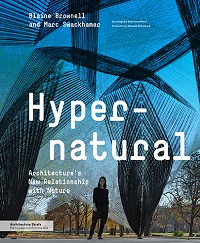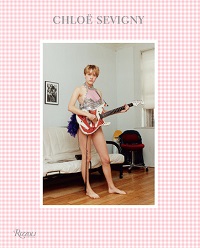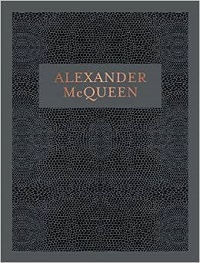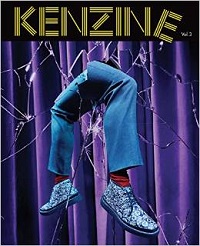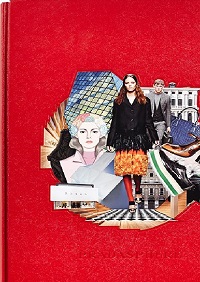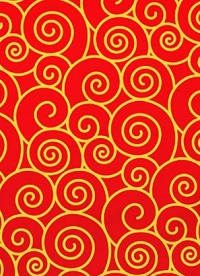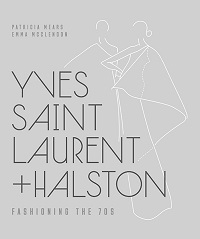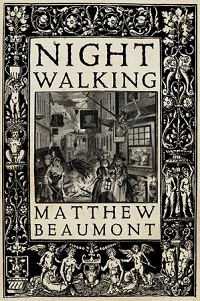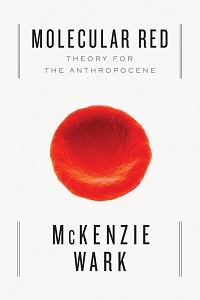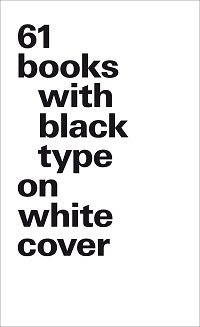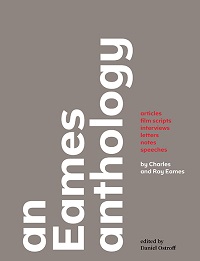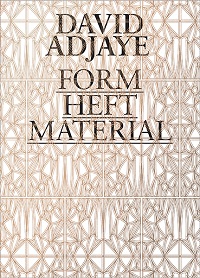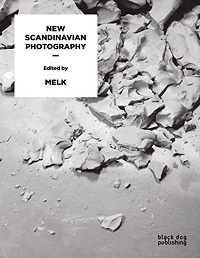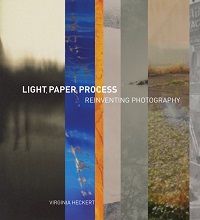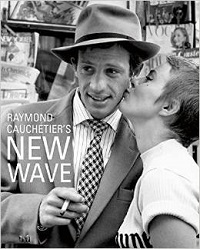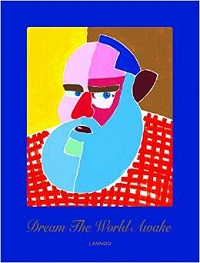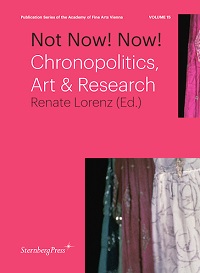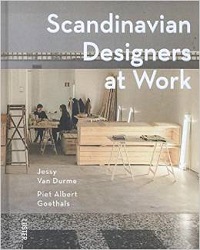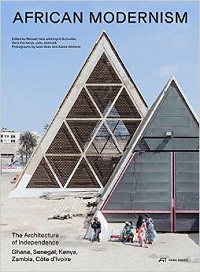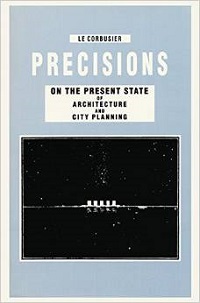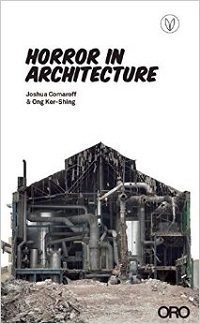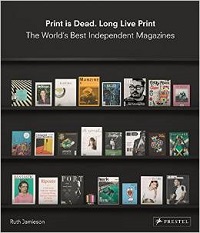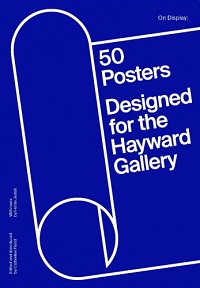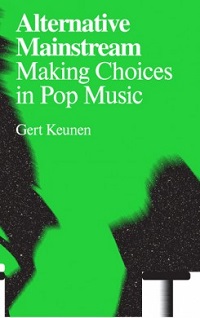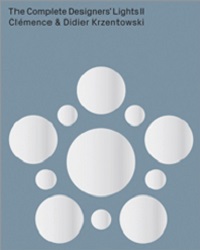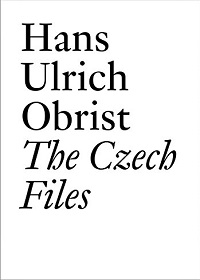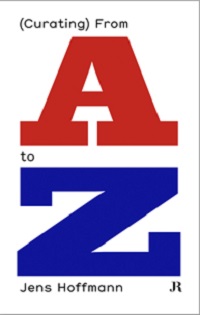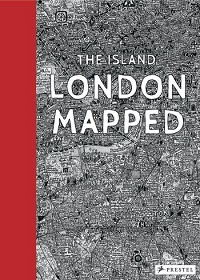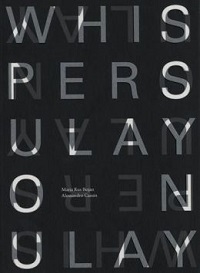Click on the image for more information, and to purchase
Over 20 of our most popular non-fiction and creative-writing titles. Including recent books by Olivia Fane, Rebecca Solnit, Reni Eddo-Lodge, James Lovelock and Yuval Noah Harari – while you’ve got the time, catch-up on the best new writing!
FREE LOCAL DELIVERY!
We are making free weekly (Monday, Wednesday & Friday) deliveries in the following postal areas EC1, EC2, EC3, EC4, E1, E2, E3, E5, E8, E9, E10, N1, N5 & N16. If your postal address is in one of these postcodes, type in the code 'FreeDel' when processing your online order and the cost of £6.00 p&p will be deducted from the total. There is no maximum to the number of times this code can be used - however it will only deduct £6.00 per order.
PLEASE CLICK ON A COVER FOR MORE DETAIL & TO ORDER A BOOK
In Marx's critique of political economy and subsequent Marxian analyses, the capitalist mode of production refers to the systems of organizing production and distribution within capitalist societies. Anna Lowenhaupt Tsing is an American professor of anthropology whose research in the fields of humanities, natural and social sciences has led her to write on shamanism, politics and ethnography. Her recent book The Mushroom at the End of the World, now new in paperback, takes the research findings of Tsing’s investigation into the commercial picking, and distribution to market, of mushrooms and relates this supply chain to the wider, global, economic and social situation we find ourselves in the early 21st century. Tsing’s book focuses on the matsutake mushroom: very valuable and highly prized in Japan, yet, now found outside of the far east in the US, where it is picked and shipped to Asia. So far so good, this could easily be a somewhat dry, academic case study utilising the export of mushrooms, to reveal underlying trends in global capital. In many ways the book does exactly that, and it being published by a US university press rightly points to the fact that the book arises out of academic research. The tone of her writing however, is not at all bland; it’s as though, along her way, writing her story, Tsing has fallen out of love with the university and moved in with the human beings sharing the centre of the story.
Tsing’s initial heartfelt assessment of the global economic situation will no doubt strike a chord: ‘The economy is no longer a source of growth or optimism; any of our jobs could disappear with the next economic crisis. […] I find myself without the handrails of stories that tell where everyone is going and, also, why […]I find myself surrounded by patchiness, that is, a mosaic of open-ended assemblages of entangled ways of life, with each further opening into a mosaic of temporal rhythms and spatial arcs […] an appreciation of current precarity as an earthwide condition allows us to notice this-the situation of our world.’ She continues ‘…we imagine such precarity to be an exception to how the world works. It’s what “drops out” from the system. What if, as I’m suggesting, precarity is the condition of our time’.
The matsutake mushroom is the basis and focus of this story and Tsing, early on provides a poignant visual image; astoundingly, it is said that matsutake were the first living organism to emerge from the devastation of the Hiroshima bomb, and this depiction is something of a theme for this book: damage. Impaired humans, people broken and dislocated, primarily by war; ‘survivalists’ hiding in the hills, American ex-servicemen, survivors of the Vietnam war uncomfortable in the mainstream of society, living a life ‘off-grid’ in the Cascade mountains of Oregon. Lao, Thai and Vietnamese refugees and migrants with ‘neither money nor western education’ using the skills honed in Indochinese wars to survive in the public/private swathes of industrialised and ravaged forests. Tsing’s analysis rightly revolves around people, the effect on lives through industrialised processes, changing landscapes. There is science too, Tsing’s writing masterfully brings to life the mushrooms symbiotic relationship with its environment. Through it all Tsing allows the matsutake, the mushroom to lead the story
Tsing’s analysis of the precarious nature of life and the reality for many people around whom this book is written is also the story of the mushroom of the book: Matsutake are not cultivated, but collected: they tend to occur ‘naturally’ in forests and woodland where there is a history of human intervention or even, devastation. Although there is pattern to the dispersal of matsutake, they are notoriously hard to find. This scarcity makes the matsutake valuable, but the difficulty of collecting them makes for the fascinating story; somehow, she manages to turn these humble fungi into a presence, a deity even, weaving the story and revealing wonderful, redeeming and healing possibilities for all our futures in a precarious present. Her writing criss-crosses the history and science of the matsutake whilst suggesting how it’s relation to our human story might offer scenarios and solutions to our troubled relationship with our environment.
Something is stirring: After a recent spate of memoirs by 'Punk' women, Patti Smith, Viv Albertine, Cosey Fanni Tutti, Kim Gordon, Carrie Brownstein, several ‘experimental’ texts by American women writers have been recently re-printed. Chris Kraus’ ‘I Love Dick’ edition by Serpents Tail in 2015 perhaps triggered this most recent re-appraisal of inventive and radical writing. I’m not actually sure that ‘I Love Dick’ was ever out-of-print, but the simple graphic re-design of the cover of the most recent edition somehow captured, certainly our customers, and obviously, by the success and popularity the book has achieved, the imagination of readers everywhere. Originally written in 1997 Kraus’s book is, according to a popular online retailer, ‘Widely considered to be the most important feminist novel of the past two decades’ and is now serialised on screen. This month Penguin have re-published Kathy Acker’s 1984 influential ‘Blood and Guts in High School’ and Chris Kraus has written her biography ‘After Kathy Acker’.
I’ve just finished reading Modern Love, which I did with a short interlude part way through to read Valerie Solanas’ ‘Scum Manifesto’; with hindsight, I think reading both together was a good combination. Scum Manifesto’s opening lines give a sense of the rich revolutionary potential in the air in the late 1960s/early ‘70s: Life in this society being, at best, an utter bore and no aspect of society being at all relevant to women, there remains to civic-minded, responsible, thrill-seeking females only to overthrow the government, eliminate the money system, institute complete automation and destroy the male sex. I don’t read much fiction anymore and perhaps this doesn’t leave me in great stead for tackling DeJong’s prose from nearly a half century ago, but on reading it I am reminded of the potential of fiction, it’s ability to conjure a tangible new space from within the pages of book. Reading Modern Love has, for me, similarities to reading, say, William Burroughs or Thomas Pynchon, where the construct of narrative fiction has been consciously eroded.
I’m not sure I’m really able to give any appraisal of Modern Love, although I did enjoy it and did get a great deal from it. Safer, probably, to leave the critique and introduction to Chris Kraus who has written a back-cover blurb: Working largely alone, DeJong invented a narrative form that’s at once intimate and highly constructed. Wilder than the French nouveau roman, Modern Love cannibalizes genre and realist fiction and travels through time to explore the dilemmas of being a 27-year old loser who’s told by the culture that she’s free to say and do anything I want.
Originally published in New York in 1977, has just been re-published by Ugly Duckling Presse and Primary Information.
One of the many positives of working in a bookshop is that I occasionally get advance copies of new books, page proofs, to give them the book trades insider jargon. Usually they arrive as a paperback version of what will be released as a hardback a few months down the line. Annoyingly, for, pedant that I am, these books actually feel like bastardised versions – knock-offs of the genuine article: the publication ‘hacked’; “Uncorrected Page Proofs” blazoned across the cover image; the publishers’ logo not-quite fitting on the spine – I could go on but I won’t.
One such book is Hito Steyerl’s forthcoming collection of essays Duty Free Art to be published by Verso later this year. And like my proof copy her writing addresses everything hacked in this world, or how the world is hacked and how the hacked world informs her understanding of visual culture.
Her subject matter reminds me of reading Paul Virilio, particularly War and Cinema, and Pure War but this isn’t to say her writing is at all derivative – more that she like Virilio, is able to take the technologies of war, information and media, and apply them to visual arts culture. Steyerl writes snappily and immersively – the reader is there with her as she data-mines WikiLeaks; the War on Terror; tax avoidance and what she terms Freeport art storage and impossibly wealthy art collections; Smartphones and Big Data.
Duty Free Art is not a detailed analysis of new technologies, nor is it dry and academic, and it is all the better for it in my opinion; I feel that by the time Steyerl had had the time to research it to the hilt the technologies she investigates would have moved on. What we have in her book is a compelling critique of the media-world today, a rich, idea-filled, collection of texts that will engage anyone interested in contemporary visual culture.
David Wojnarowicz: Arthur Rimbaud in New York (Times Square), 1978-79
What drives an artist to do what they do? What compels them? What are the underlying factors?
Do, what we consider ‘great’ painters, writers and performers produce because they are driven by some unseen internal forces, or, are they engaging creatively as the result of pragmatism: Create - rather than criticise? Olivia Laing would probably have us believe in the former and I would tend to agree with her. Her excellent book The Lonely City: Adventures in the Art of Being Alone has plenty to say on the matter.
Although her title doesn’t really offer a way into the main subjects of this book, it nonetheless ‘drives’ her output and provides a framework for her investigation; her own loneliness, which she expertly reveals to us, acknowledging all its inherent shamefulness. Laing describes herself as a writer and critic and she writes for amongst others Frieze, The Guardian and New Statesmen.
Whilst living in New York, where she had relocated to live with a lover, who subsequently changed his mind, she found herself instead “clinging hopelessly to the city itself”, and began to look for her mood reflected in images both of the city, and produced in, New York.
Laing has an enviable ability to write both well, interestingly and engagingly so, whilst also following her own notions of what it is that an artist does and produces. Fascinated with the image of isolation within the city, and happy not to follow the accepted wisdoms of the art history she is obviously educated in Laing looks at a number of artists and asks of their output – what is it that they do? Mixing biography whilst interrogating works themselves, her writing ranges easily between the social (and sex) lives of her artists, whilst analysing how their output deals with the uneasy subject of how they relate to others; how we feel personally inadequate in the image of the constantly ‘active’ and busy city.
Laing is also critical of gentrification, and worries that the city will suffer immeasurably due to the ‘blandification’ authorities impose on our streets as they stifle anything that transgresses accepted ‘normalities’ – how this cleaned, ‘acceptable’ image of the city ultimately make us all feel lonely: how it says nothing to us about our lives.
According to Abbie Hoffman, along with the numerous rejections he received from US publishing houses after sending out his original manuscript was a comment from an editor who wrote that he wouldn’t even let his own child read it!- such was the shock with it was initially received; his now famous Steal this book, latterly published in 1971, is a hippy survival manual which gives practical advice ranging from free food and housing through guerrilla broadcasting, demonstrations and the law, via ‘joint’ rolling techniques (probably a dated term now?), how to shop-lift and virtually everything else to destroy the capitalist system and bring forth a free society. It became so popular in the 70s that Hoffman was quoted as saying "It's embarrassing when you try to overthrow the government and you wind up on the Best Seller's List."
Abbie Hoffman is one of names that appears many times in this collection of Gavin Wade’s writings, ‘upcycle this book: 26 texts by Gavin Wade & friends’; others include R. Buckminster Fuller and El Lissitzky. Wade’s title is of course a direct reference to Hoffman’s and he shares many of those Hippie ideals, albeit his are slightly milder, and very much focused on the art world within which he works. Wade is an artist/curator and Director of Eastside Projects in Birmingham, the gallery and project space he established in 2008. Like Bucky Fuller and El Lissitzky, Gavin Wade is something of what is commonly termed a polymath, and with Abbie Hoffman, all four can be included in the ‘group’ agents of change.
upcycle this book collects texts from the mid-2000s and most elaborate on Wade’s conceptual structure for Eastside Projects. One of his founding principles was to up-end the now accepted gallery format, the ‘white-cube’, not the Jay Jopling owned London and Hong Kong gallery, rather the now traditionally held notion of the ‘impassive’ white gallery space, a ‘neutral’ volume within which art is displayed. Drawing on El Lissitzky’s Abstract Cabinet (1926-28) Eastside Projects has taken a much more inclusive approach to what is the ‘output’ of a ‘gallery’. Eastside Projects’ exhibitions involve the collaboration of all the staff, and Wade sees the functioning of the ‘art’ as very much a part of Eastside Projects, and more, that the way Eastside functions informs the art, and that this output in turn informs, the immediate environment.
upcycle is comprised of interviews with Gavin Wade, notably by Paul O’Neill, but also with James Langdon and Abake, it also includes some witty Q&As with those who have inspired him, conjured up in Wade’s imagination, and these fictions appear dotted throughout the texts. There are poetic demands to the government and Birmingham City Council asking for more investment along with a vision as to how art and culture can improve society and numerous haiku-like texts and rengas – termed 'Twenga' after appearing across twitter. The book is lovingly illustrated, though I know this is the ‘wrong’ term, with Wade’s drawings, ‘A – Z-Type Display Units’ a kind of multifunctioning drawing of display/structure/letters reminiscent of stages platforms, or even, gallows.
Illustrated manuscripts have held a deep fascination for me for some time, there is something I find compulsive about that densely packed and intricately arranged information that hints at a ‘finite’ and ancient world carefully observed and described.
I don’t come across them that often working in a bookshop devoted to contemporary visual culture but when I do I can’t stop myself looking at these miniature, illustrated and jewelled worlds, effortlessly combining image and text.
At the same time, lacking, as I am, a classical education, the texts are impenetrable to me – written in Latin(?) and with capitals rendered in such overblown ornature that it’s practically too much of a distraction to even begin to decipher. Nonetheless the pages seen together always suggest to me some sort of ‘perfect’ order, an ancient world viewable in its entirety across these richly and carefully produced volumes.
I’ve recently been reading Christopher de Hamel’s book on the subject ‘Meetings with Remarkable Manuscripts’ in the hope that it will confirm what I have imagined these incredible books are about and how they relate to the culture we live in.
The book is pleasingly well illustrated throughout, though it in no way presents ‘facsimile’ pages - I have seen enough originals to know that - it still gives a very good sense of them. He is an academic but, happily, he hasn’t written an academic book in Meetings… Also happily, he has an irreverence for the ‘Holy’ nature of the 12 volumes his book covers (I think probably all are Christian in origin) and his writing is personal– he is an important librarian at one of the most highly regarded libraries – and manages to mix this with a deep understanding of ancient books and history whilst keeping me happy with humour and with reference to our contemporary world.
Art
Known widely as a Catholic nun with an avant-garde flair, Corita Kent (1918–1986) has a personal legacy that has tended to overshadow her extensive career as an artist. This handsomely illustrated catalogue places Kent in her rightful position among the foremost figures of pop art, such as Andy Warhol, Ed Ruscha, and Roy Lichtenstein. Although Kent has been largely excluded from the academic and critical discourses surrounding 1960s American art, this publication re-evaluates her importance and highlights how her work questioned and expanded the boundaries of the pop art movement. Four essays and nearly 90 catalogue entries pull together a variety of topics—art history, religion, politics, linguistics, race, gender, mass media, and advertising—that influenced Kent’s life and work during the 1960s. Eminent pop scholars delve into the relationship between her art and that of her contemporaries, and explore how her art both responded to and advanced the changes in modern-day Catholicism stemming from Vatican II. More than 200 vibrant images showcase Kent’s ingenious screenprints, which often combine handwritten text and commercial imagery. Offering an unparalleled, rigorous study of an artist who has been largely overlooked, this book is an important contribution to scholarship as well as a fascinating presentation of Kent and her work to a wider audience.
Exploring the relationship between public art and its role within urban regeneration, this new title by graphic designer and artist Scott King brings together a series of works inspired by government ideologies in post-industrial Britain. Works include Long Live Death, in which the artist places Antony Gormley’s Angel of the North atop Nelson’s Column in Trafalgar Square, London, A Balloon for Britain, a series of photographs in which King imagines the current Conservative government offering him millions of pounds to devise a scheme that would regenerate Britain’s ten poorest towns and cities, as well as Infinite Monument, an ongoing sculpture based on Superstudio’s seminal Il Monumento Continuo from 1969, a gridded superstructure that covers the surface of the entire planet.
Andy Warhol (1928–1987) and Robert Mapplethorpe (1946–1989) are well known for significant work in portraiture and self-portraiture that challenged gender roles and notions of femininity, masculinity, and androgyny. This exciting and original book is the first to consider the two artists together, examining the powerful portraits they created during the vibrant and tumultuous era bookended by the Stonewall riots and the AIDS crisis. Several important bodies of work are featured, including Warhol’s Ladies and Gentlemen series of drag queen portraits and his collaboration with Christopher Makos on Altered Image, in which Warhol was photographed in makeup and wigs, and Mapplethorpe’s photographs of Patti Smith and of female body builder Lisa Lyon. These are explored alongside numerous other paintings, photographs, and films that demonstrate the artists’ engagement with gender, identity, beauty, performance, and sexuality, including their own self-portraits and portraits of one another Essays trace the convergences and divergences of Warhol and Mapplethorpe’s work, and examine the historical context of the artists’ projects as well as their lasting impact on contemporary art and queer culture. Firsthand accounts by the artists’ collaborators and subjects reveal details into the making and exhibition of some of the works presented here. With an illustrated timeline highlighting key moments in the artists’ careers, and more than 90 color plates of their arresting pictures, this book provides a fascinating study of two of the most compelling figures in 20th-century art.
Graphic Design
This A to Z survey of typographic design by leading typographers A2/SW/HK showcases over 100 carefully selected contemporary designers, including the best examples of their current work, and also features an introduction by Rick Poynor. Featured designers include M/M (Paris), David Pearson, Philippe Apeloig, Anthony Burrill, Marion Deuchars and Non Format, among others. There are also essays by acclaimed design writers Emily King, Paul Shaw, Monika Parrinder and Colin Davies that explore the past and future of type design. This book will encourage and inspire the next generation of designers as well as provide a sourcebook for seasoned designers and educators.
Design
Featuring 60 recipes, each introduced with an insightful historical anecdote and accompanying image sourced from original Soviet recipe books. As the Soviet Union struggled along the path to Communism, food supplies were often sporadic and shortages commonplace. Day to day living was hard, both the authorities and their citizens had to apply every ounce of ingenuity to maximize often inadequate resources. The stories and recipes contained here reflect these turbulent times: from basic subsistence meals consumed by the average citizen (okroshka), to the extravagant banquets held by the political elite (suckling pig with buckwheat), and a scattering of classics (beef stroganoff) in between.
Adolf Hitler’s makeover from rabble-rouser to statesman coincided with a series of dramatic home renovations he undertook during the mid-1930s. This provocative book exposes the dictator’s preoccupation with his private persona, which was shaped by the aesthetic and ideological management of his domestic architecture. Hitler’s bachelor life stirred rumors, and the Nazi regime relied on the dictator’s three dwellings—the Old Chancellery in Berlin, his apartment in Munich, and the Berghof, his mountain home on the Obersalzberg—to foster the myth of the Führer as a morally upstanding and refined man. Author Despina Stratigakos also reveals the previously untold story of Hitler’s interior designer, Gerdy Troost, through newly discovered archival sources. At the height of the Third Reich, media outlets around the world showcased Hitler’s homes to audiences eager for behind-the-scenes stories. After the war, fascination with Hitler’s domestic life continued as soldiers and journalists searched his dwellings for insights into his psychology. The book’s rich illustrations, many previously unpublished, offer readers a rare glimpse into the decisions involved in the making of Hitler’s homes and into the sheer power of the propaganda that influenced how the world saw him.
Coinciding with the new edition of the bestseller Designing Design, Kenya Hara's latest book, Ex-formation, searches for the beginning of design in the unknown. For Kenya Hara, design begins with comprehension of the unknown. In contrast to "information," "exformation" describes how little we really know and thus becomes the starting point for any type of design. Based on a range of projects the book describes what "exformation" can look like in design practice and how this concept alters ur classic understanding of information design. Following the path embarked on in Designing Design (2007) and its successor, White (2010), Ex-formation continues to explore the void, absence, and indeterminacy in contemporary design.
Photography
Alec Soth’s reputation as one of the leading lights of contemporary photographic practice is largely predicated on the books he has published. This unusual catalogue accompanies a touring exhibition which uses the four major bodies of work which Soth has published as books since 2004 as the structural basis for both a mid-career retrospective and an investigation of Soth’s prescient understanding of the various and distinct applications of photography as a tool for storytelling across diverse media. The title of the exhibition comes from Walt Whitman’s poem Song of Myself [1855] and references both the pages of his books gathered for consideration and the notion that his work is also a story about Soth himself. Soth's meteoric rise to international acclaim began with his first book, Sleeping by the Mississippi, published by Steidl in 2004. The book has sold through numerous print runs and has long been out-of-print. It embodies not only a moment in which a new and original voice emerged with an unusual ability to transpose subtle and highly personal stories of local American life, but also marked a significant early event in the photo-book publishing boom we are currently experiencing. The success of his two subsequent volumes, Niagara [2006] and Broken Manual [2010], combined with the hugely influential exploration of self-publishing under his Little Brown Mushroom imprint, have all reinforced Soth’s position as a master of the book form. The recent success of Songbook [2015] has seen a return to the mainstream of book publishing.
Photographer Christopher Herwig has covered more than 30,000 km by car, bike, bus and taxi in 14 former Soviet countries discovering and documenting these unexpected treasures of modern art. From the shores of the Black Sea to the endless Kazakh steppe, these extraordinary bus stops show the range of public art from the Soviet era and give a rare glimpse into the creative minds of the time. The book represents the most comprehensive and diverse collection of Soviet bus stop design ever assembled from: Kazakhstan, Turkmenistan, Uzbekistan, Kyrgyzstan, Tajikistan, Ukraine, Moldova, Armenia, Abkhazia, Georgia, Lithuania, Latvia, Estonia and Belarus. With a foreword by writer, critic and television presenter Jonathan Meades.
Theory
Renowned poet and conceptual artist Kenneth Goldsmith collects a massive assortment of quotations about New York City in the twentieth century. This kaleidoscopic montage from hundreds of sources is a literary adoration of New York as the capital of the world, and was inspired by Walter Benjamin’s unfinished masterpiece, The Arcades Project, a compendium of quotations about nineteenth-century Paris. Goldsmith brings together an immense archive of quotations about modern New York from novels, histories, newspapers, memoirs, letters, advertisements and more unlikely sources, all organized into lyrical and philosophical categories. The result is a magisterial and poetic history of New York in the twentieth century, and an extraordinary, one-of-a-kind book of experimental literature.
Bad New Days examines the evolution of art and criticism in Western Europe and North America over the last twenty-five years, exploring their dynamic relation to the general condition of emergency instilled by neoliberalism and the war on terror. Considering the work of artists such as Thomas Hirschhorn, Tacita Dean, and Isa Genzken, and the writing of thinkers like Jacques Rancière, Bruno Latour, and Giorgio Agamben, Hal Foster shows the ways in which art has anticipated this condition, at times resisting the collapse of the social contract or gesturing toward its repair; at other times burlesquing it. Against the claim that art making has become so heterogeneous as to defy historical analysis, Foster argues that the critic must still articulate a clear account of the contemporary in all its complexity. To that end, he offers several paradigms for the art of recent years, which he terms “abject,” “archival,” “mimetic,” and “precarious.
Architecture
The retro-futuristic epoch is one of the most visually spectacular in architecture's history. The utopian buildings of the 1960s and 1970s never go out of style. This book compiles radical ideas and visionary structures. The notion of utopia proves as diverse as it does universal. From exuberant master plans to singular architectural expressions, the rise of the utopian architectural movement in the 1960s and 1970s represents a critical shift in ideology away from mid-century traditionalism. This period shakes off the conformity and conventions of the 1950s in favour of a more experimental post-war agenda. Marked by ground-breaking reinterpretations of both the single family house as well as more large scale developments, the embrace of utopian and generally progressive thinking mirrored the cultural revolution of the times. These daring, charming, futuristic, and hopeful designs were not isolated to a particular part of the world. Visionary voices longing for a fresh approach to architecture began appearing across France, Japan, the United States, and beyond.
The life of urban nomads places new demands on cities, buildings, residences, and working spaces. This book presents temporary architecture, flexible room and furniture concepts, and the fitting tools for a generation that feels at home in every corner of the globe. Today’s internet generation no longer needs a home. It is mobile. It works six months in a shared office in Berlin, spends the summer in a caravan in Chile, and shows up just in time for the next project at a temporary desk for a client in New York. Growing up with the internet and digital tools means living and working differently. Aside from a functioning wireless connection and good coffee, web developers, designers, musicians, journalists, and other creative entrepreneurs need, above all, inspiration, new ideas, contacts, and international exchange. So they travel from one co-working space to the next, alternating countries and continents, as well as accommodation, friends, and cultures. The New Nomads documents this trend, in particular showing the architecture, interior design, modular furniture, and multi-functional tools that this nomadic generation has developed for its own specific needs. Divided office floors with flexible uses, temporary living and working spaces that move with the nomads, multi-functional objects that are at once chair and storage space, table and bed, or cupboard and desk are all featured in the book. The necessary infrastructure is not hidden away but becomes the distinguishing design feature. Compactness and functionality meet a high standard for aesthetics, sustainability, and material.
Photography
Landscape in my Mind is a pictorial journey through the landscapes of current art photography. The exhibition covers the whole gamut of current positions in international landscape photography from Hamish Fulton to Andreas Gursky. Always a network of connections between man and nature landscape presents itself as a mental projection level of the perception of our surroundings – both close and distant. The works of art function as 'distorted' mirrors of perceived reality; they are not pure documentations produced at the click of a camera but hybrid tableaus between fiction and abstraction, metaphors of the view of the world and beyond. Typically, the photographs are 'pictures painted with the camera' in large format, which exude the self-confidence of New Photography. Blurring effects and compositional qualities enhance the tableau’s painterly and pictorial value. Consequently, artists such as Elger Esser or Jörg Sasse, for example, see themselves more as 'picture composers' rather than photographers. Rather than the objective perception of landscape as found in say Thomas Struth, these images elicit emotions in the observer, including feelings of being overwhelmed, melancholy, disquiet and dread.
Theory
What is the function of style today? If the 1970s were defined by Stop curating! And think what curating is all about. This book starts from this simple premise: thinking the activity of curating. To do that, it distinguishes between 'curating' and 'the curatorial'. If 'curating' is a gamut of professional practices for setting up exhibitions, then 'the curatorial' explores what takes place on the stage set up, both intentionally and unintentionally, by the curator. It therefore refers not to the staging of an event, but to the event of knowledge itself. In order to start thinking about curating, this book takes a new approach to the topic. Instead of relying on conventional art historical narratives (for example, identifying the moments when artistic and curatorial practices merged or when the global curator-author was first identified), this book puts forward a multiplicity of perspectives that go from the anecdotal to the theoretical and from the personal to the philosophical. These perspectives allow for a fresh reflection on curating, one in which, suddenly, curating becomes an activity that implicates us all (artists, curators, and viewers), not just as passive recipients, but as active members. As such, The Curatorial is a book without compromise: it asks us to think again, fight against sweeping art historical generalizations, the sedimentation of ideas and the draw of the sound bite. Curating will not stop, but at least with this book it can begin to allow itself to be challenged by some of the most complex and ethics-driven thought of our times.
By the time Umberto Eco published his best-selling novel The Name of the Rose, he was one of Italy’s most celebrated intellectuals, a distinguished academic and the author of influential works on semiotics. Some years before that, in 1977, Eco published a little book for his students, How to Write a Thesis, in which he offered useful advice on all the steps involved in researching and writing a thesis—from choosing a topic to organizing a work schedule to writing the final draft. Now in its twenty-third edition in Italy and translated into seventeen languages, How to Write a Thesis has become a classic. Remarkably, this is its first, long overdue publication in English. Eco’s approach is anything but dry and academic. He not only offers practical advice but also considers larger questions about the value of the thesis-writing exercise. How to Write a Thesis is unlike any other writing manual. It reads like a novel. It is opinionated. It is frequently irreverent, sometimes polemical, and often hilarious. Eco advises students how to avoid “thesis neurosis” and he answers the important question “Must You Read Books?” He reminds students “You are not Proust” and “Write everything that comes into your head, but only in the first draft.” Of course, there was no Internet in 1977, but Eco’s index card research system offers important lessons about critical thinking and information curating for students of today who may be burdened by Big Data.
The Feminist Avant-Garde of the 1970s documents a tectonic change in the way women portray themselves in art. Historically, women were depicted as a projection of male fantasies, prejudices, and relationships. However in the 1970s, for the first time, female artists began collectively to investigate visual representations of their own selves. They studied their own bodies and created the prospect of determined feminine identities. Editor Gabriele Schor explores the Feminist Avant-Garde to emphasize the role that these artists played for the last four decades. The works are provocative, radical, poetic, ironic, angry, cynical and heartfelt. The artists shared a collective consciousness that reassessed, and even rejected, what came before, turning to new ways of expression in the fields of photography, performance, film, and video. The collection SAMMLUNG VERBUND founded in 2004 in Vienna focuses on the feminist art movement of the 1970s as one of the main areas and is with 500 works the largest collection with this emphasis. Included are works by Eleanor Antin, Cindy Sherman, Ana Mendieta, Nil Yalter, Ketty La Rocca, Birgit Jürgenssen, Renate Bertlmann, Francesca Woodman and others. This important book emphasizes the accomplishments of women artists who have made a name for themselves while encouraging the young generation.
Art
The Enjoyment of Photography presents a broad selection of Josephine Pryde's work from 1990 to 2014. In photographic works that encompass the full range of the medium's historical and current genres, styles, and techniques, but also through sculpture and writing, the Berlin- and London-based artist (*1967) offers incisive, often ironic, and provocative commentary on the values, hierarchies, and economies subtending the field of contemporary art against the backdrop of larger societal shifts. Estranging the familiar or conversely expressing the common in a radically unforeseen manner, Pryde's ingenuous choice of subject matter, unusual formal solutions and surprising juxtapositions continue to capture international exhibition audiences. Prefaced by art historian André Rottmann, the volume features new essays by scholar Rhea Anastas and artist/critic Melanie Gilligan that insightfully survey Pryde's work over the last two decades, providing in-depth discussions of the artist's continuous engagements with photographic imagery, visual culture, social and artistic conventions, as well as political issues associated with feminism (among other concerns). An illustrated exhibition chronology and detailed bibliography provides further information on the artist's career.
_______________
Art
The Petrified Forest National Park in Northeast Arizona protects one of the largest deposits of petrified wood in the world. Despite stern warnings, visitors remove several tons of petrified wood from the park each year, often returning these rocks by mail (sometimes years later), accompanied by a "conscience letter." These letters often include stories of misfortune attributed directly to their theft: car troubles, cats with cancer, deaths of family members, etc. Some writers hope that by returning these stolen rocks, good fortune will return to their lives, while others simply apologize or ask forgiveness. "They are beautiful," reads one letter, "but I can't enjoy them. They weigh like a ton of bricks on my conscience. Sorry…" Bad Luck, Hot Rocks documents this ongoing phenomenon, combining a series of original photographs of these otherworldly "bad luck rocks" with dozens of facsimiles of intimate, oddly entertaining letters from the Park's archives.
Design
It is not easy to translate into English the Italian word autoprogettazione. Literally it means auto = self and progettazione = design. But the term ‘self-design’ is misleading since the word ‘design’ to the general public now signifies a series of superficially decorative objects. By the word autoprogettazione Mari means an exercise to be carried out individually to improve one’s personal understanding of the sincerity behind the project. To make this possible you are guided through an archetypal and very simple technique. Therefore the end product, although usable, is only important because of its educational value. A project for making easy-to-assemble furniture using rough boards and nails. An elementary technique to teach anyone to look at present production with a critical eye. The first edition of the book was compiled by the Duchamp Centre and printe for the exhibition at the Galleria Milano in 1974.
Photography
Tones of Dirt and Bone: Mike Brodie. The images in Tones of Dirt and Bone were made between 2004 and 2006, with a Polaroid camera and Time Zero film. Brodie used the characteristics and limitations inherent to this type of camera and film to his advantage. The portraits he made are further enhanced by the peculiar colour palette of the film. Due to the restriction of manual focus and expensive film, that came only ten sheets to a box, each image feels deliberate and precious.
Photographer Friso Spoelstra has visited numerous traditional folk festivals in sixteen different European countries during the past ten years and recorded the traditions in his photos. Devils & Angels brings these stories together and shows individuality as well as surprising similarities between the various different cultures of ever-growing Europe.
Three iconic series of photographs by Juergen Teller. Woo (2013) was made after the exhibition of the same name at the ICA, London, in 2013. Debunking the status of both art and fashion photography, the works were all placed on the same level, assembled to form wallpaper covering o ne room of the art centre. This combination of images was like a pin board of family pics, a tangled retrospective of his work as fashion photographer and artist. For this series, Teller has isolated certain parts of this wallpaper, once again changing the way we look at the images: the representation of a representation of a representation. Another series, Masculin (2013), has never been shown before. It was made after Teller visited the exhibition Masculin/Masculin at the Musée d'Orsay (2013), which featured one of his self-portraits. The images answer each other, with each photo from the Orsay exhibition being echoed by a Teller self-portrait. The latter show the artist in a gym, dressed in shorts and trainers and doing exercise, hefting barbells and sweating profusely in poses that evoke nudes in classical painting and sculpture, humorously and self-mockingly recalling all the effort—and grotesqueness—that lies behind attainment of those ideal muscular bodies. The last series of photographs, Irene im Wald (2012), is undoubtedly the most intimate and personal of the three. These small-format photos follow Irene, Juergen's mother, on a walk through the forest of Erlangen, a place familiar to him since childhood. Evoking the balmy mood of an afternoon with the family, each image expresses the photographer's tender vision of his mother, seen in the forest on a sunny winter's day. The words accompanying the images are like voice-overs, the voice of the photographer and also the walker, as the rhythm of walking engenders an introspective mood.
Theory
The Shape of Evidence examines the role and use of visual documents in contemporary art, looking at artworks in which the document is valued not only as a source of information but also as a distinctive visual and critical form. It contends that for artists who use film, photography or written sources, adopting formats derived from specific professional, industrial, scientific of or commercial contexts, the document offers a way to develop a critical reflection around issues of representation, knowledge production, art and its history. The book invites viewers to reflect upon the production and interpretation of seemingly straightforward images, and proposes that some artists can show us through their practice how to turn these deceptively simple images inside out. It addresses several issues that are key both in art and in general culture today: the role of the museum and the archive, the role of documents and the trust that is placed in them, the circulation of such images and the historical genealogies that can be drawn in relation to images. Its uniqueness, however, also derives from its method: it is based on a close reading of a select number of works of art (e.g. Christopher Williams, Fiona Tan, Jean-Luc Moulène), which makes it approachable and engaging with the reader (the book will be illustrated). It is through looking at a select number of artworks that the reader is led to consider greater issues concerning visual documents. Moreover, the book is unique in its interdisciplinary approach: while being about contemporary art it discusses objects and ideas drawn from a wide spectrum of areas including literature, history, photography history, scientific representation, surrealism, conceptual art, commercial photography and so forth. Ultimately the book invites viewers to reflect upon the production and interpretation of seemingly straightforward images, and proposes that some artists can show us through their practice how to turn these deceptively simple images inside out.
_______________
Theory
Recounting art dealer Karsten Schubert’s recuperation from major surgery in the famous Claridge’s Hotel in London, this idiosyncratic novel interweaves reality with fantasy. Room 225–6 follows the author-character ‘The Protagonist’ around London’s Mayfair as he hosts endless art world gatherings, tea parties for twenty and visits a multitude of local galleries and stores. Incorporating multi-layered voices and devices, the distinctive narrative introduces the reader to a memorable host of characters – from the ‘The Political Prisoner’ to ‘The Little Mondrian’ – in a tale filled with humour of observation and incident. Bringing to life this frightening yet extraordinary period in one man’s life, it is at once honest, satirical, idiotic and bold.
Art
Accompanying a major traveling exhibition, this first-ever survey of the rarely seen notebooks of Basquiat features the artist’s handwritten notes, poems, and drawings, along with related works on paper and large-scale paintings. With no formal training, Jean-Michel Basquiat (1960–1988) succeeded in developing a new and expressive style to become one of the most influential artists in the postmodern revival of figurative during the 1980s. In a series of notebooks from the early to mid-1980s, never before exhibited, Basquiat combined text and images reflecting his engagement with the countercultures of graffiti and hip-hop in New York City, as well as pop culture and world events. Filled with handwritten texts, poems, pictograms, and drawings, many of them iconic images that recur throughout his artwork—teepees, crowns, skeleton-like silhouettes, and grimacing masks—and these notebooks reveal much about the artist’s creative process and the importance of the written word in his aesthetic. With over 150 notebook pages and numerous drawings and paintings, this important book sheds new light on Basquiat’s career and his critical place in contemporary art history.
Shit and Die is an editorial project by Maurizio Cattelan, Myriam Ben Salah and Marta Papini, published as part of the homonymous exhibition in Torino (November 6th 2014 - January 11th 2015). The publication is not a mere comment on the exhibition; it could be seen as an extension of it, a missing room. As the show, it is conceived as the most subjective, obsessive and irrationally non exhaustive composition. Several local stories, unpublished archival material, exclusive contributions by artists and theorists incorporate into a consistent and unique narration through seven deadly chapters that readers can comprehend as a whole tale. The list of artists on show is composed of established names from the international art scene as well as emerging artists, including among others: Davide Balula, Guy Ben Ner, George Condo, Martin Creed, Stelios Faitakis, Rokni and Ramin Haerizadeh, Petrit Halilaj, Dorothy Iannone, Yan Pei Ming, Aldo Mondino, Carol Rama, Roman Signer, Alexandre Singh, Jim Shaw, Andra Ursuta, Francesco Vezzoli, Jakub Julian Ziolkowski, Carlo Mollino. The list of contributors to the publication comprehends the artists included in the show and artists and theorists specifically invited for the publication.
Graphic Design
This book is an investigation into the design and history of British magazines over the past 170 years. It identifies turning points and new directions in one of the most sensitive barometers of mass-market design taste, from the advent of two periodicals - Punch and the Illustrated London News - that changed publishing fundamentally, through to the beginnings of digital distribution. A magazine flourishes or folds according to its audience's response to its look and feel - sometimes more so than its written content - and this study of a developing history encompasses discussion of graphic design, typography, photography and innovative print technology. It explores why magazines have looked how they do. Published with full access to the National Art Library's unparalleled archive of periodicals, British Magazine Design is a definitive history.
Design
Nas on language, Cat Power on looking inward, Spike Jonze on loving what you do, and Kim Gordon on feeling the flow. These are just a few of the indie stars and surprising insights collected in this gorgeous book by Huck magazine. Since launching in 2006, Huck has been at the vanguard of London's thriving independent publishing scene and has grown into an internationally distributed bi-monthly, with editions available on newsstands in 20 countries worldwide. Bringing together the best insights from over 60 of the most inspiring people Huck has spoken to over the years—along with exclusive photography and art that has come to embody Huck's distinct aesthetic—this book presents a diverse range of truths, creative wisdom, and life lessons from those who paddle against the flow.
Architecture
Despite the ever-growing sophistication of synthetic and digital tools, it's the natural world that captures the imaginations of today's vanguard designers. By looking to nature as a teacher rather than simply as a source for raw materials, pioneers in the emerging biomimicry movement are developing design methods and materials to create intelligent buildings that emulate life itself. In Hypernatural architecture and material experts Blaine Brownell and Marc Swackhamer present an international collection of forty-two case studies that illustrate astonishing new applications possible in this rapidly growing field, from Echoviren, a botanical pavilion that was designed to wilt into its surrounding redwood forest in Northern California, to the MIT Media Lab's Silk Pavilion, constructed by the threads of silkworms as they passed over scaffolding. Together, these projects show that by looking to nature, design can be a tool that makes our built environment more efficient, sustainable, and, most of all, livable.
Photography
A celebration of the eclectic and daring personal style of the actress and contemporary fashion icon Chloë Sevigny—famous for looking cool without looking like she’s trying. Chloë Sevigny has been a muse in the downtown creative scene for over three decades, beginning in the early ’90s when she modeled for Sassy, appeared in a Sonic Youth music video, and then starred in the controversial independent movie Kids (1995). Her quirky and avant-garde fashion sense was quickly noticed by indie magazines and the world’s top photographers. Since then, she has starred in dozens of films and television series, in addition to starting a fashion label with the trendy global boutique Opening Ceremony. This volume is a deeply personal illustrated chronicle of the evolution of Sevigny’s unique style throughout her career: from a teenage skater girl to award-winning film actress and fashion designer. The book includes early personal photos of Chloë taken by her high school friends; film stills; modeling appearances for brands such as Miu Miu and Chloé; magazine editorials for Purple, i-D, and The Face by top photographers such as Mark Borthwick, Terry Richardson, and Juergen Teller; and homages by artists such as Elizabeth Peyton and Karen Kilimnik. Additionally, Sevigny shares some of her treasured personal memorabilia, such as casting fliers, Polaroids, zines, and pages from her day planners. This volume will appeal to the legions of global Chloë fans and fashion industry followers, as well as a mainstream audience who will find this book an inspirational style bible.
Fashion
'Fashion is a big bubble, and sometimes I feel like popping it. 'Alexander McQueen, 2009. This definitive publication on Alexander McQueen (1969 - 2010) invites you into the creative mind of one of Britain's most brilliant, daring and provocative designers. Accompanying the V&A's landmark exhibition Alexander McQueen: Savage Beauty, this comprehensive catalogue features 28 ground-breaking essays from expert fashion commentators and cultural scholars which examine the richness and complexity of McQueen s visionary fashion. The publication includes over 440 striking images, from intimate backstage portraits and editorials by leading fashion photographers to previously unpublished sketches and research boards from the McQueen archive. At the centre of the book is a Cabinet of Curiosities gatefold with a specially commissioned photo shoot that showcases McQueen s breath-taking attention to detail. The book closes with an encyclopaedic survey of all of McQueen's London collections, from his 1992 MA graduate collection to his final collection, posthumously presented in March 2010.
“For the third instalment in our collaboration with TOILETPAPER for our advertising campaigns, we worked with Maurizio, Micol and Pierpaolo to take people on a mysterious journey to an unfamiliar world. A place where the ordinary is slightly distorted, mirrors lead to other dimensions and the strange and beautiful coexist in singular harmony. We love that David Lynch’s (the inspiration for our collections) skewed and somewhat disruptive sense of storytelling seamlessly fits with how the TOILETPAPER approach image making and the final results speak for themselves. Needless to say we’re delighted with the outcome and hope everyone else enjoys the images as much as we do.” Carol Lim & Humberto Leon.
Pradasphere is not about the past; it is a snapshot of a single moment: now. In this comprehensive collection of Prada's work, Pradasphere llustrates the house's unique place in contemporary culture and explores the outside forces that shape its vision. From Prada's origins and the clothing, accessories and films made to the creative input of collaborators and the insights drawn from disciplines such as art, film and architecture, this book shows Prada's unique vision and wide influence. Pradasphere is more than a collection of Prada ephemera; it's an exploration of the way Prada uses design to explore ideas about the world. Through clothing, film, architecture, and more, Prada shows that design is about the joy of working and creative exploration and how that spirit finds its way into all that is made.
_______________
Fashion
For centuries, China’s export arts—jade, silks, porcelains, and, more recently, cinema—have fuelled Western fantasies of an exotic East and served as enduring sources of inspiration for fashion. This stunning publication explores the influence of Chinese aesthetics on designers, including Giorgio Armani, Christian Dior, Jean Paul Gaultier, Karl Lagerfeld, Ralph Lauren, Alexander McQueen, and Yves Saint Laurent. Drawing upon Chinese decorative arts, cinema, and costume—notably imperial court robes, the close-fitting cheongsam, and the unisex Mao suit—their designs are fantastical pastiches of anachronistic motifs. As in the game of “telephone,” the process of cultural translation transforms the source material into ingeniously original fashions that are products solely of the designers’ imaginations. In a similar way, contemporary Chinese film directors render fanciful, highly stylized evocations of various epochs in China’s history—demonstrating that China’s imagery is equally seductive to artists in the East and further inspiring today’s designers. Juxtaposing modern fashions and film stills with their forebears in fine and decorative arts and historical dress, this book reveals the rich and ongoing creative dialogue between East and West, past and present.
This fascinating publication is the first to examine side by side the careers and work of two of the biggest names in 20th-century fashion, Yves Saint Laurent (1936–2008) and Halston (1932–1990). Their designs—chic, sexy, and glamorous—came to exemplify the 1970s, a singular and dynamic era in fashion history. Inspired by menswear, foreign cultures, and wide-ranging historical periods, and employing new fabrics, YSL and Halston together crafted a new and distinctly modern way of dressing. Moreover, although their output differed and they were based on different continents, the two designers shared many career parallels. A visual timeline of the designers’ lives illustrates how their rises and falls, from the 1950s to their respective struggles in the 1980s, were surprisingly in sync. Engaging passages by Patricia Mears and Emma McClendon discuss the social, cultural, and economic factors that influenced both designers, and their subsequent impact on fashion—including the rise of the star designer as personality, the cult of celebrity, and the creation of the fashion conglomerate. The authors also address the importance of colour, cutting-edge materials, innovative construction techniques, accessories, and perfume to both designers’ aesthetics. Remarkable photographs of the designers and their garments round out this essential volume on two figures who made an indelible mark on fashion history.
Theory
“Cities, like cats, will reveal themselves at night,” wrote the poet Rupert Brooke. Before the age of electricity, the nighttime city was a very different place to the one we know today – home to the lost, the vagrant and the noctambulant. Matthew Beaumont recounts an alternative history of London by focusing on those of its denizens who surface on the streets when the sun’s down. If nightwalking is a matter of “going astray” in the streets of the metropolis after dark, then nightwalkers represent some of the most suggestive and revealing guides to the neglected and forgotten aspects of the city." In this brilliant work of literary investigation, Beaumont shines a light on the shadowy perambulations of poets, novelists and thinkers: Chaucer and Shakespeare; William Blake and his ecstatic peregrinations and the feverish ramblings of opium addict Thomas De Quincey; and, among the lamp-lit literary throng, the supreme nightwalker Charles Dickens. We discover how the nocturnal city has inspired some and served as a balm or narcotic to others. In each case, the city is revealed as a place divided between work and pleasure, the affluent and the indigent, where the entitled and the desperate jostle in the streets.
In Molecular Red, McKenzie Wark looks for ways to think, and perhaps even combat, the philosophical foundations of the Anthropocene. Throughout the great upheavals of the past 300 years, the carbon economy has been predominant. It was at the centre of both the Soviet and the American empires and, as a result, both are doomed to fail. "Out of the ruins of this devastated, desert landscape, we must salvage what might help us understand the future. Thus Wark revisits the work of Alexander Bogdanov – Lenin’s rival – and the great Proletkult writer and engineer Andrey Platonov. In this reading, the Soviet experiment emerges from the past as an allegory for our time."Moving toward the present, in the midst of Empire’s fall, Wark reads Donna Haraway’s cyborg critique and science fiction writer Kim Stanley Robinson’s Martian utopia as powerful resources for grasping the world that the climate change has wrought. Wark proposes an alternative realism, where hope can be found amongst what remains and endures.
Graphic Design
The designer Bernd Kuchenbeiser loves books – some because of their content, some because of their appearance. His library expands constantly and not only for professional reasons; there are plenty of volumes he loves to have on his shelves simply because he finds them such beautifully designed objects. A "good book" and whatever it is that makes a book beautiful are not easy to define – the details of a design may well suit one book to perfection, but be very much out of place with another publication. A good book never wants to be left on the shelf – it needs to be read, examined, discussed, and it was with all of this in mind that the author launched his Website "A Good Book", where publications of many different genres are presented as if in an intimate diary, and discussed not only in terms of their content, but also in the context of their creative design, or the pleasures to be had from holding and examining them. He was quick to notice how many of these fine books had a simple design combination of black text on a white background. This observation is why 61 books with black type on white cover came into being as an "analogue" selection from the website: each book here is presented with the cover, a bibliography and a short text, anecdote, or even a quotation to initiate discussion. Much care, effort and affection was lavished on compiling and designing a reader – this is an anthology which of course also references the black and white thematic focus. 61 books with black type on white cover is available in two sizes: a small reader in paperback format or as a large display volume with the covers in the original dimensions.
Design
An Eames Anthology collects for the first time the writings of the esteemed American architects and designers Charles and Ray Eames, illuminating their marriage and professional partnership of fifty years. More than 120 primary-source documents and 200 illustrations highlight iconic projects such as the Case Study Houses and the molded plywood chair, as well as their work for major corporations as both designers (Herman Miller, Vitra) and consultants (IBM, Polaroid). Previously unpublished materials appear alongside published writings by and about the Eameses and their work, lending new insight into their creative process. Correspondence with such luminaries as Richard Neutra and Eero Saarinen provides a personal glimpse into the advance of modernity in mid-century America.
Architecture
Born in Tanzania, David Adjaye is rapidly emerging as a major international figure in architecture and design—and this stunning catalogue serves only to cement his role as one of the most important architects of our time. His expanding portfolio of important civic architecture, public buildings, and urban planning commissions spans Europe, the United States, Africa, Asia, and the Middle East. He transforms complex ideas and concepts into approachable and innovative structures that respond to the geographical, ecological, technological, engineering, economic, and cultural systems that shape the practice of global architecture. The publication of this compendium of work and essays coincides with the scheduled opening of Adjaye’s National Museum of African American History and Culture on the National Mall in Washington, D.C. Adjaye’s completed work in the United States includes the Museum of Contemporary Art in Denver, a pair of public libraries in D.C., and several private residences. He is also known for his collaborations with artists, most recently with the British painter Chris Ofili. Following an introduction by Zoë Ryan, Adjaye writes on his current and future work, with subsequent essays by an extraordinary cadre of architectural scholars on Adjaye’s master plans and urban planning, transnational architecture, monuments and memorials, and, finally, the forthcoming museum in D.C. Portfolios of Adjaye’s work thread throughout this comprehensive volume.
Photography
The first comprehensive study of the contemporary Scandinavian photography scene produced in collaboration with MELK, the book documents the shift in Scandinavian photography away from a documentary practice and towards a fine- art discourse. Since the late 1980s Scandinavian photography has evolved into an internationally recognised art scene, with the past two decades seeing a transition from traditional photo-journalistic practice towards a fine-art discourse. Focusing on the last ten years, New Scandinavian Photography highlights the work produced by a diverse range of artists who are exploring and manipulating the use of photography in their practices and explores photography as a medium through academic texts and interviews, addressing the technical and material properties of photography in the context of fine art and pan-media practice with a focus on the exhibition room as well as printed matter. Through critical examination and personal interviews, the book showcases established names in the photographic art scene such as Asger Carlsen and Emil Salto, along with emerging talents that include Marten Lange and Marthe Elise Stramund. A key focus is upon artist’s use of photography as a medium, along with their methods of presentation, from the white cube gallery space to intimate printed matter.
From its beginnings, photography has been shaped by the desire to understand and explore the essence of the medium. Light, Paper, Process features the work of seven artists—Alison Rossiter, Marco Breuer, James Welling, Lisa Oppenheim, Chris McCaw, John Chiara, and Matthew Brandt—who investigate the possibilities of analogue photography by finding innovative, surprising, and sometimes controversial ways to push light-sensitive photographic papers and chemical processing beyond their limits. A panoply of practices emerges in the work of these artists. Some customize cameras with special lenses or produce images on paper without a camera or film. Others load paper, rather than film, in the camera or create contact-printing with sources of light other than the enlarger, while still others use expired photographic papers and extraneous materials, such as dust and sweat, selected to match the particular subject of the photograph. All of the artists share a willingness to embrace accident and chance. Trial and error contribute to an understanding of the materials and their potential, as do the attitudes of underlying curiosity and inventive interrogation. The act of making each image is like a performance, with only the photographer present. The results are stunning.
_______________
Photography
In the late 1950s and early 1960s French New Wave cinema exploded onto international screens with films like Les quatre cents coups, A bout de souffle and Jules et Jim. They were radical, artistic, original and most importantly set up the director as a creative genius; at the forefront were Francois Truffaut and Jean-Luc Godard. Today these films are credited with changing cinema forever. For many film goers they command strong and passionate respect and became the foundations on which a lifetime of cinema-going is built. In the photographs of Raymond Cauchetier we bear witness to the great artistic genius that was central to the process of making these films. Cauchetier's photographs are a culturally important documentary of the director at work, his methods and processes. His photographs capture some of the most memorable moments in film; Jean-Paul Belmondo and Jean Seberg on the Champs Élysées in A bout de souffle, Jean Moreau in the race scene of Jules et Jim, Anna Karina in a Parisian Cafe in Une femme est une femme.
Fashion
Walter van Beirendonck has been at the forefront of fashion for more than thirty years. One of the 'Antwerp Six' and the director of fashion at the Royal Academy of Fine Arts, he is known for the uninhibited nature of his work and the wonderful daring that he shows as a designer. This is the third and final edition of Dream the World Awake by Walter Van Beirendonck; it is a numbered edition of 900 copies. It has a luxury finishing with an extra changeable golden foil cover by Dirk Van Saene, one of the famous Antwerp Six. The book gives exciting and captivating form to the complexity and multilayered quality of Van Beirendonck's work, and reveals his wide range of inspirations, which include technology, art, pop culture and ethnography.
Theory
Not Now! Now! engages with the politics of time in art: historical narratives and memory, the unforeseen rhythms of time, and the challenge of visualizing time. The book connects the postcolonial and queer debate around chronopolitics with artistic strategies that introduce breaks, stutter time, use citations and anachronisms, and introduce deferrals and collapses between time and meaning. They thus challenge orderly and rigid temporal concepts and their effects on bodies and the social. Contributions by art theorists, artists, and artistic researchers highlight how temporal norms organize our biographies and intimate relations, as well as the handling of capital or the continuation of colonial relations. The book instead suggests to focus on a particular non/moment in time: the not-now/now. It indicates a possible break in the temporal order, a meaningful gap between “not now!” and “now!” Or: the past and the future (“not now!”) uncannily but promisingly showing up “now!”
Design
The account of a unique journey through the fascinating North during in which Jessy Van Durme and Piet Goethals visited 18 contemporary designers (of furniture and everyday objects) who they selected based on the quality of their work and their vision - designers who deserve to step out of the shadows. Jessy and Piet visited workshops, houses and apartments and made personal portraits of the designers behind the product - their personalities, their sources of inspiration, their vision for design and heritage...Through illuminating photographs and enlightening text, Scandinavian Designers at Work perfectly captures the atmosphere of the interiors, products, people and landscapes.
Architecture
In the 1950s and 1960s, most African countries gained independence from their respective colonial power. Architecture became one of the principal means by which the newly formed countries expressed their national identity. Parliament buildings, central banks, stadiums, convention centres, universities and independence memorials were built, often to heroic and daring designs. At the same time, these buildings exemplify also the difficulties, contradictions and dilemmas these countries experienced in their nation-building process. African Modernism: The Architecture of Independence investigates for the first time the relationship between architecture and nation building in Ghana, Senegal, Kenya, Côte d'Ivoire, and Zambia. It features well over one hundred buildings with brief descriptive texts, images, site plans and selected floor plans and sections. The majority of images are contributed by celebrated Dutch architectural photographer Iwan Baan, documenting the buildings in their present state. Each country is portrayed in an introductory text and a timeline of historic events. Further essays on post-colonial Africa and specific aspects and topics, also illustrated with images and documents, expand on the themes of this outstanding book.
Coinciding with the 50th anniversary of his death (August 27, 2015), one of Le Corbusier's most significant books becomes available again in English. The 'Precisions', as the book is commonly known, emerged from a spontaneous and exuberant series of 10 lectures Le Corbusier gave in Buenos Aires in 1929, reflecting a new maturity in his thinking. They contain some of his most compelling aphorisms, covering technique as the basis of architecture, the human scale in design, furniture, the private house, apartments and office buildings, the city, the League of Nations competition, teaching architecture. As he spoke, Le Corbusier improvised colour drawings on large sheets of paper. The drawings and lectures are unique in their eloquent and concise summary of his philosophy of architecture and urban design, stating the principles that informed his work from the 1920s on. This new edition for the first time features all of Le Corbusier's drawings in colour. A new essay by British scholar Tim Benton, written for this new edition, contextualizes the 'Precisions' within Le Corbusier's oeuvre and comments on their lasting significance.
Horror in Architecture looks at the idea of horror and its analogues in architecture. In these, normal compositions become strange: extra limbs appear, holes open where they should not, individual objects are doubled or split or perversely occupied. Horrifying buildings re-imagine the possibilities of architectural language, shifting from "natural" norms to other, more rarified and exciting options. They define an expanded aesthetic field that marries the beautiful to the distorted, the awkward, the manifold, and the indeterminate. Through an investigation that spans architecture, art, and literature, this study attempts to limn horror through its shifting forms and meanings - and to identify a creeping unease that lingers at the very centre of the modern project. Horror in Architecture may be read as a history, as an alternative to the classic canon of good and proper architectures, or as a sly manifesto for a new approach to the design of the built environment - one that encourages a playful subversion of conventions. To capture horror in its many guises, this study is presented in a unique manner. An introductory essay describes the historical fortunes of horror as an aesthetic idea, from Roman antiquity to the pulp films and novels of the present day. Here, the authors put forward a new theory of the sources and effects of horror in modernity and in modern architecture. This is followed by case studies of types, linking classic tropes (clones, doubles, hybrids, psychotics and the undead) to specific buildings and architectural theories. As a result, this study may be read in a number of different ways. It may be consumed as a total theoretical piece, from start to finish. Or it may provide a series of more casual readings, in the various chapters and brief presentations of the works of individual architects or buildings.
_______________
Graphic Design
While magazines such as Spin and The Face have disappeared from newsstands and mailboxes, non-traditional periodicals with names like Boneshaker, Lucky Peach, Anorak, WRAP, and Kinfolk are taking their places on shelves and coffee tables everywhere. Print is Dead. Long Live Print is an eye-opening look into the explosion of independent, creatively led magazines that are currently shaping the future of print journalism. It showcases over 50 examples of innovative magazines from around the globe. The book divides the magazines into genres, including art and culture, travel, sports, and style. Each periodical is represented by selected spreads and newly commissioned photography, along with a brief introductory text. Interviews with editors, art directors, and founders from each magazine offer background information as well as insight into why they decided to start their publications and the challenges they face. A directory at the back lists dozens more magazines worth investigating. This paean to the printed word is filled with creativity and innovation as well as hope for the future of print media. Request email when in stock
On Display: 50 Posters Designed for the Hayward Gallery is a large format collection of highlights from the Hayward Gallery’s archive of exhibition posters. The archive acts as both a who’s-who of contemporary art and a compilation of some of Britain’s finest exhibition poster design. Focused on a golden age of British typography, this collection brings together designs by the likes of Neville Brody, Theo Crosby, Richard Hollis and Roger Huggett - designers who would go on to define contemporary British graphic design. On Display is both a collection of highly desirable posters to tear out and frame, as well as a fascinating insight into art and graphic design in the second half of the twentieth century. Catherine Flood, Curator of Posters and Prints, V&A, introduces her selection with an essay placing them within the context of twentieth century graphic design. Each poster is further accompanied by an individual text by writer Hettie Judah illuminating the related exhibition and the work of the designer. A3 in format with perforated pages, each of the posters have been carefully re-scanned and colour-corrected to the highest possible standard, ready to be read, framed and displayed. Designed by Claus Due at Designbolaget. Request email when in stock
Sound
Which mechanisms and logics of decision making and choice lie at the basis of the selections made by people working in the pop music circuit? Which general frames of thinking and evaluating do pop music professionals apply? Almost as a rule, these people will talk about the same bands, those that make the crossover to the outside world – the ‘hypes’. What are the origins of these hypes? How is it possible that everybody talks about the same bands? What makes people talk about some, yet the same bands, while remaining silent about other bands? And why is it that only a small percentage of the legion of bands that stand at the gates get ample airplay, concerts, press coverage and, as a result, a sufficiently large audience? Alternative Mainstream deals with the music segment that lies between the ‘mainstream’ and the ‘underground’. This segment includes genres that range from hip hop to rock and from folk to electronic music. Gert Keunen attempts to uncover which aesthetics and ideologies lie at the basis of the cultural construct that is the alternative mainstream and embeds his findings in a broader socio-economic context. Doina Petrescu, Precarias a la deriva, Simon Sheikh, Stavros Stavrides, Maiko Tanaka, Marina Vishmidt, Sarah van Walsum, et al. Request email when in stock
Design
The Grand Domestic Revolution Handbook is a compendium of living research developed by artists, designers, theorists, neighbours, and activists who investigate and expand the status of the home outside the narrow lens of private concerns, but in consideration of the great potential in supporting a privacy that revitalizes and allows for other forms of sociality. It offers numerous entries that include case studies, project documentation, ephemera, analysis, and theory in the form of artistic, collective, and spatial design operations. This collection of texts and images is thereby unusual, complex, and fascinating, yet as constructive as any home interior catalogue. The book provides tools for building a domestic commons where private and public merge and are thereby redefined. GDR is informed by neo-Marxist, post-structuralist, and late nineteenth-century material feminist views on domestic labour, issues, actions, and research. Inhabiting the structure of a 1960s home economics design manual, the book investigates existing domestic regimes and divides materials into the following key categories: Home Apparatus, Accommodations, Work at Home, Properties and Oikos, and Neighbouring (Organizing). Many projects are woven throughout these chapters. They constitute a diverse and sometimes conflicting tapestry of domestic tactics, apparatuses of disruption, and political entanglements to spark your imagination and catalyse your own GDR practices. Whether you are a flexible worker, domestic worker, house husband, elderly caregiver, mother, activist, or student intern, this book aims to provide an evocative — if not useful — resource for an artistic, political, social, or personal "revolution" from the very place where you eat, sleep, and work. It brings together relations and tools being forged between the private and public spheres, and across multiple fields, in the interest of (in)forming society from the very inner but common sphere of the domestic realm. Contributors: Agency, Sepake Angiama, Ask!, Ruth Buchanan, Binna Choi, Doris Denekamp, Silvia Federici, Katherine Gibson, Arend Groosman, Shannon Jackson, Dolores Hayden, Christina Kiaer, Margaret Kohn, Gabriele Kunsch, Emily Pethick. Request email when in stock
The Complete Designers’ Lights II (1950–1990). Clémence and Didier Krzentowski – the founders and directors of the leading contemporary design Galerie kreo – have been collecting lights for 30 years. Focusing particularly on Italian and French design, their collection is the most important of its kind today, spanning creations from the 1950s to the 1990s. It includes large groups of works by Paulin, Guariche, Castiglioni, and the biggest collection of Sarfatti. Conceived as a catalogue raisonné of nearly 500 lights, this book also includes a discussion between Didier Krzentowski, the design historian and Director of the Bordeaux Musée des Arts décoratifs et du Design, Constance Rubini, and the journalist and design critic Pierre Doze. Also featured is an essay by the design and art critic Alex Coles focusing on the relationship between light design and light art, mainly through a parallel study of Gino Sarfatti’s and Dan Flavin’s works. Request email when in stock
Architecture
Cedric Price Works 1952-2003: A Forward-minded Retrospective. This anthology brings together for the first time all of the projects and articles & talks by British architect Cedric Price (1934-2003). A chronological arrangement places Price in the context of postwar England, illuminating how cultural, social and political factors conditioned his work from the outset, and then subsequently shaped its development as his practice changed from the 1960s-90s. Full project descriptions are set alongside illustrations, many previously unpublished. Content material is drawn from the original work. Edited by Samantha Hardingham, the books present the munificence of Price: thinker, philosopher, artist and unparalleled raconteur – a thoroughly modern traditionalist. Request email when in stock
Small Architecture/Natural Architecture: Kengo Kuma. This book combines two extended essays by Japanese architect Kengo Kuma, which together provide an overview of his key built works and a summation of his ideas about architecture, developed over the course of his career to date. Originally published as two smaller books, and until now only available in Japanese, this edition comprises a lucid theoretical manifesto for humble, sustainable architecture sensitive to materials and to place. Request email when in stock
Theory
The Czech Files is a result of visits and discussions carried out by Hans Ulrich Obrist in artists’ studios in Prague around 2001 and 2008. Interviews with Milan Grygar, Jirí Kovanda, Karel Malich, and many others, map the historical events as well as unknown stories of the actors of the Czech ‘second avant-garde’. The artists and intellectuals of this generation were born in between 1920–1945. They lived through the 1960s cultural upheaval known as the Prague Spring, and witnessed the ‘normalization’ of the 1970s when censorship was re-introduced. This series of interviews contextualize a generation of Czech artists within the historical events that marked their lives and careers, and draw attention to their urgency to resist historical events while keeping their artistic practices sustained, radical, and vital. Published with tranzit.cz, this publication is a unique encounter with key artistic figures and moments of history, which created a complex landscape of artistic practices under socialism, as well as after the changes. Request email when in stock
(Curating) From A to Z offers a summary of the development of curatorial practice over the last two decades seen through the eyes of curator Jens Hoffmann. In this publication each letter of the alphabet evokes a particular word related to the world of exhibition making: From A (as in Artist) and B (as in Biennial) to R (as in Retrospective) and W (as in White Cube). Employing a diarist style, the curator presents his personal curatorial alphabet with a similar transparency and the same idiosyncratic character revealed in many of his exhibitions. The entries are not only stimulating and intellectually rigorous, but also emotionally engaging. Request email when in stock
Art
The Island: London mapped. A masterpiece of imaginative cartography, artist Stephen Walter’s detailed maps of London reveal much more about the city than its winding streets and historic buildings. London’s streets, built up over more than two thousand years, are a maze of history, cultures, and stories. In his fantastically detailed maps of the city, Stephen Walter translates these elements into a tangle of insightful yet humorous words and symbols that make up a complex of hidden meanings and wider contradictions. Testament to Walter’s skill and importance as a cartographer, his ground-breaking, oversized map The Island was one of only two contemporary works to feature in the seminal Magnificent Maps exhibition held at the British Library in 2010, the other by Grayson Perry, alongside hugely important historical maps, such as Pierre Desceliers's 1550 world map. The work, which reimagines London as an insular body of land surrounded by water, has been reconfigured and turned into Walter’s own version of a London street atlas, with readers able to explore his unique vision of the city by flicking through the pages. A grid at the front of the book lets readers navigate their way through the map and the large-scale reproductions allow for close examination of his witty depictions. Walter’s maps have a cult following and now a wider audience will be able to immerse themselves in his personal vision that both celebrates the art of cartography and pokes intelligent fun at the city he calls home. Request email when in stock
Ulay has been a pioneer of Polaroid photography and one of the central figures of performance art since the 1970s. A singular presence among the artists of his generation, his radically innovative work, partly known for his twelve-year partnership with Marina Abramović, has received critical acclaim worldwide. This generous volume Whispers reveals an extremely innovative oeuvre, coherently rooted in a personal life philosophy guided by strong ethical principles. Contributors: Marina Abramović, Laurie Anderson, Timea Lelik, Tevz Logar, Thomas McEvilley, Charlemagne Palestine, Lena Pislak, Silvio Wolf. Request email when in stock
_______________
































